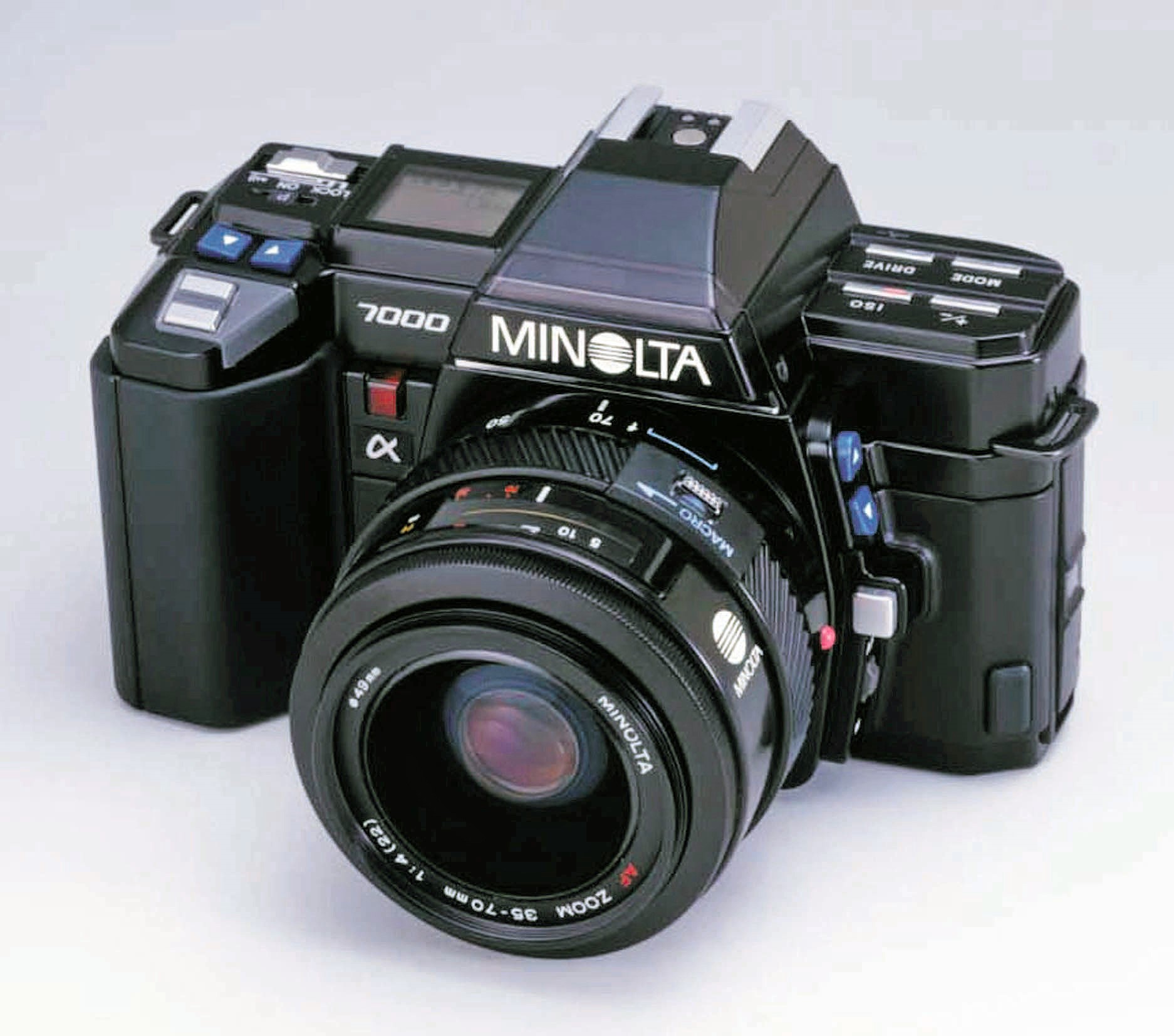Topics
Minolta 7000 Registered as Essential Historical Material for Science and Technology by the National Museum of Nature and Science
September 9, 2020
Tokyo (September 9, 2020) - Konica Minolta, Inc. is pleased to announce that the Minolta 7000 has been registered as an Essential Historical Material for Science and Technology by the National Museum of Nature and Science, Tokyo, Japan. The historic camera was launched in 1985 by one of the company’s predecessors, then Minolta Camera Co., Ltd. The recognition positions the product as an important development linked to the current digital single-lens reflex camera systems. This is the second time Konica Minolta’s heritage was registered as an Essential Historical Material for Science and Technology, following Sakura Tennennshoku Film (Sakura Color Film) in 2013.

About Minolta 7000
In the development of cameras in the early 1980s, it was a major task to incorporate automatic focusing functions while maintaining the characteristics of single-lens reflex cameras with a variety of interchangeable lenses. In order to overcome this challenge, in the course of developing the camera, the decision was made to redesign the mount (the junction between the camera body and the lens). Though the change in the mount meant that the existing lenses could not be used, the product development moved on to further strengthen the technology in the future to provide more value to the customers. The entire system of the camera has been reviewed from a clean slate: the focus detection function has been designed on the body, and a newly developed lens system incorporating an interlocking mechanism with the body has been added to achieve almost perfect auto focus function. This was an innovative product that changed the mainstream of 35mm SLR cameras at once, leading to the current digital SLR camera systems.
In 2006, Konica Minolta ended its founding businesses of cameras and photographic films. The imaging technologies it has cultivated over many years, however, are one of its valuable core technologies. Konica Minolta will continue to contribute to society by creating value that meets the needs of the customers by focusing on visualization of the invisible, based on the imaging technologies inherited over the years.
About Essential Historical Materials for Science and Technology
This registration system has been implemented by the National Museum of Nature and Science. Its purpose is to preserve and utilize materials that have important significance in passing them on to the next generation, as well as materials that have a noticeable impact on the way of life, society, economy, and culture of the nation. The first registration of products was made in 2008, followed by annual selections since then.
